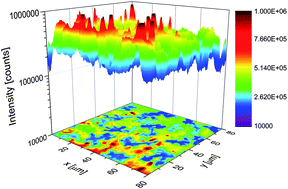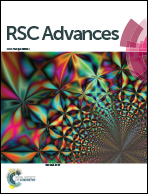Efficiency of energy transfer decreases with the number of graphene layers†
Abstract
High-resolution fluorescence imaging together with spectrally- and time-resolved analysis indicates a strong dependence of the energy transfer efficiency to graphene on the number of graphene layers. By correlating intensity and decays of emission, we found that energy transfer is the most efficient for single layer graphene, and reaches 89%. In contrast, for structures with more graphene layers (from 2 to 7), a substantial drop in energy transfer efficiency is observed. The results clearly show that the number of graphene layers, in addition to the distance between emitters and graphene as well as the excitation energy, is key parameter which can be used to control the acceptor properties of graphene in hybrid nanostructures.


 Please wait while we load your content...
Please wait while we load your content...